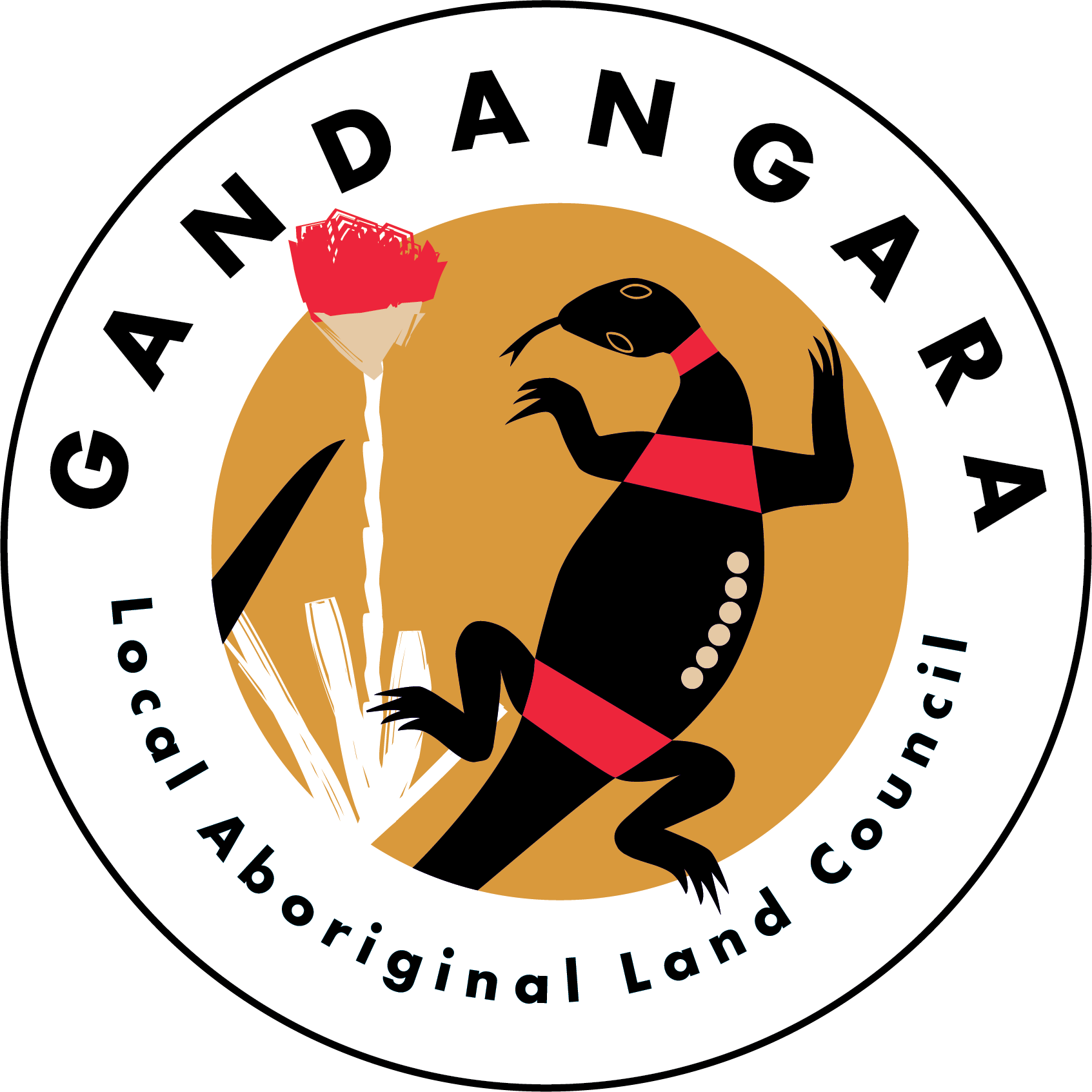Interviews with the First Peoples Ranger Response Team
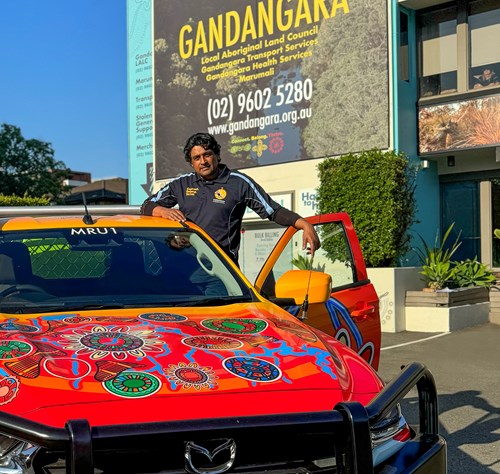
Navigating the work of caring for Country
Strini Pillai is Program Manager for Heritage, Ecology and Land Management at GLALC, which is building one of the most ambitious First Nation Ranger Programs in South West Sydney.
Strini Pillai watches a snake slide into the undergrowth at Heathcote Ridge. It’s a sight that gives him a profound sense of purpose. “The greatest reward for me is to know that I have helped to provide a safe place for an animal.”
His team of First Nation Rangers is beginning the work of transforming 1,100 hectares of a critically endangered ecosystem at Heathcote Ridge into both a sanctuary for native wildlife and a training ground for the next generation of environmental stewards.
The area will connect the Georges River, Heathcote and Royal National Parks, creating a vital wildlife corridor and sanctuary to the benefit of all Australians.
Land management priorities
Strini’s role requires navigating negotiations with program managers of local councils and state bodies, principal ecologists and senior policy officers while ensuring traditional knowledge remains central to land management decisions.
“I focus on the science and legislation that informs GLALC’s efforts on behalf of eco-heritage, ecology and land management,” he says, acknowledging the guidance he receives from other managers and experts within the organisation, such as Dr Howard Smith Environmental Scientist, Kath Schilling Anthropologist and Bronwyn Patell Lead Archaeologist as well as external stakeholders.
The First Nations Ranger Program emerged from necessity when GLALC acquired the Heathcote Ridge property but faced a dumping crisis emanating from multiple local government areas. An estimated 1,200 tonnes of illegal, development-related waste, including asbestos, is contaminating the site.
With the assistance of Sutherland Shire Council, GLALC is mapping, quantifying and identifying dumped waste. “Only once it is removed, can we legally focus on restoration and fire management.”
Holistic training approach
He has adopted a holistic approach to training, with a program covering boundary protection, monitoring dumping incidents, restoring fire tracks, vegetation management, wildlife management and fire management.
“The training program meets Gandangara’s unique ecological needs and prepares the rangers to become future environmental area managers, to advocate for the protection of their land,” he says. The training also includes archaeology, anthropology, town planning and heritage values.
Women rangers are central to GLALC’s vision. “We want to empower women to be part of this protection and preservation of life,” he says. The program currently has hired Trainee ranger Trinity Paulson Dixon and ranger Project Manager Kelly Barton, with three more trainee rangers currently in the hiring pipeline.
One important aspect of the Ranger program involves re-discovering traditional ecological knowledge where cultural knowledge was lost through dispossession and colonisation of the land.
In some of the first steps to regain this knowledge, Trinity and Kelly are speaking with Elders, learning about traditional practices such as making spears and coolamons and also examining middens and soil evidence to reconstruct stories about extinct species and traditional fire management practices.
Vision for the future
Research conducted on fauna across the site revealed a large variety of birds, reptiles and marsupials, providing a baseline for future fauna management plans.
A key aspect of land management at Heathcote is fire management, including hazard protection burns and fire-trail development. Rangers learn about asset protection, reducing fuel without killing-off native species and protecting houses from fires. The program includes traditional fire management training to assist the Rural Fire Service in Sutherland in controlled hazard burns.
Strini joined Gandangara in 2022 and was inspired by its ambitious vision for the future, including establishing Heathcote Ridge as an
eco-tourism destination.
The master plan includes developing an eco-hotel serving fusion food and an eco-cultural centre, an amphitheatre for recording live dance, stories, cultural performances and artwork.
He also envisions GLALC continuing to partner with universities for research and drawing on his previous media experience, working with Marketing to produce a ranger segment as part Gandangara Media streaming.
“A visitor could experience it all on a walk on Country with Elders and rangers firsthand, but can you imagine putting a camera on the challenges rangers face daily, like restoration, fire management, border protection and land and water animal rescue?” he says. “We’d be telling the world about Australia through the eyes of its First Peoples.”
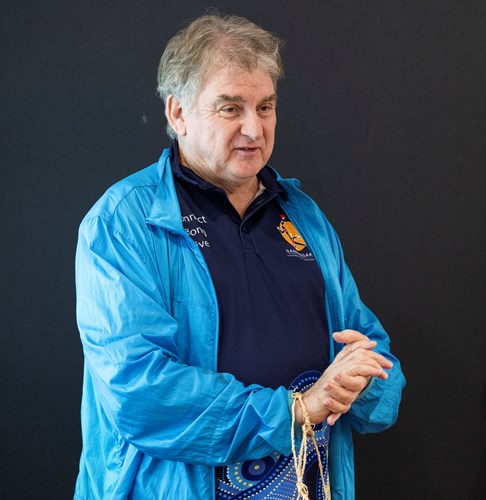
Bridging science and First Peoples’ culture
Dr. Howard Smith brings deep experience to his role as Chief Scientist (Technical Writer/Mentor) at Gandangara Local Aboriginal Land Council (GLALC).
Dr. Howard Smith combines technical expertise with cultural sensitivity. His work is a bridge for collaboration between Western science and traditional ecological knowledge, pointing to a future where both systems complement each other to build healthier communities and landscapes.
He was hired in September 2024 to assist with strategic planning on several complex issues, including providing technical writing support on the Heathcote Ridge property in Sutherland Shire. The ultimate aim is to restore the environment in a way that’s informed by cultural knowledge, he says.
“We’re trying to flesh out as much of that information as we can to tell that story and then use it to restore the environment to how it would have been before European settlement, or as close as we can.”
Traditional ecological knowledge
Dr Howard Smith has already played a key role in the restoration and regeneration of Heathcote Ridge, by compiling a Traditional Ecological Knowledge (TEK) technical report, drawing from publicly accessible data. He says this report is only the initial step, while deep, nuanced knowledge must come from First Peoples themselves. The rangers lead that engagement, he says.
“Traditional knowledge is now about repairing the damage that’s been done, and how it can be planned for by integrating this with scientific methods,” he says. He works with the Program Manager HELM Strini Pillai, Lead Archeologist Bronwyn Patell, and in a mentoring role with the Ranger team. He guides rather than directly instructs the rangers, he says.
“My role would be just showing them, say ‘hey, look, now you’ve got this, this is how it probably all fits together. You work with me and tell me what you think, and then you take it back to your Elders,’ and that’s how the process begins,” he says.
Another milestone of the team is the Heritage, Ecology, and Land Management Five-Year Strategic Plan. It outlines operational goals including ranger training, strategic partnerships with councils and private enterprise, financial sustainability and community engagement.
Dr. Howard Smith takes a forward-thinking approach, anticipating the region’s imminent developments. “In the very near future, the new (Western Sydney International) airport will be opened, and we have to take the skills we have learned at Heathcote Ridge and apply them to our lands surrounding the airport,” he explains.
Dr. Howard Smith and the team are also considering commercial land development opportunities as part of the Gandangara Community, Land and Business Plan 2024-2028, ensuring Gandangara has meaningful input into local council developments affecting their lands, with financial independence as a key priority.
Diverse experiences
Up until now, Dr. Howard Smith has had an extensive career in the environmental, engineering and land management sectors. Arriving in the Northern Territory as a laboratory analyst in 1987, he worked in Nhulunbuy on the Gove Peninsula as a chemical engineer. His commitment to community service was evident even then – he trained as a volunteer paramedic, recognising the need to contribute beyond his professional duties in this remote area.
His academic credentials span multiple disciplines: a PhD in Applied Chemistry, qualifications in tropical environmental management, archaeological heritage, ancient history and classical literature.
One of his many roles included a decade-long tenure with the Northern Land Council from 2005 to 2013, and again from 2015 to 2017. As a senior project officer managing development applications across half the Northern Territory, he learned how to work effectively with First Nations communities, building trust over time.
“While I was there for the first five years, it took nearly three years to build people’s trust,” Howard says, reflecting on his work with traditional owners. This patience became central to his approach, leading to recognition when mining companies began seeking his advice.
Central to Howard’s work is his understanding that environmental and cultural health are inextricably linked. “It is about delivering on the truth that a healthy land means healthy people.”
Strong future voice
Looking to the future, he’s optimistic about the potential of the Heathcote Ridge’s site for genuine restoration due to its relatively undisturbed state.
“When you look at all the aerial photographs back to 1920, it hasn’t changed that much. So if it hasn’t, I’d say that’s a good indicator of what it was like before Europeans got into the environment.”
On the broader impact of his team’s work,
Dr. Howard says his goal is to create a “pool of evidence and information that can be applied to whatever the government is doing” to ensure that Gandangara has a strong and informed voice in everything that affects First Peoples.
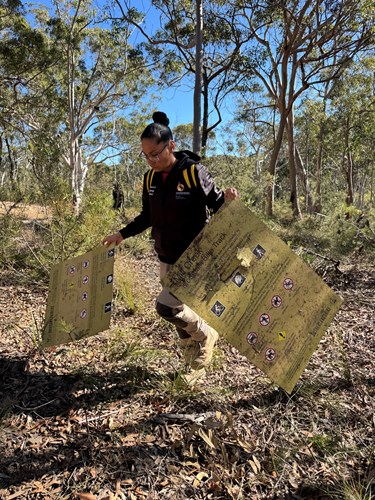
Path to renewal: a journey to reconnect with Country
Ranger Project Manager Kelly Barton says her role at Gandangara represents a transformation in her career and an exciting opportunity to help people better understand and connect to Country
Kelly Barton describes it as “a 360-degree turnaround” in her career: from a job that ultimately helped to facilitate development, sometimes too quickly and detrimentally, to a position of conserving the land that holds her people’s deepest cultural connections.
Kelly’s previous job involved liaising with Aboriginal groups and other experts on development projects. It ensured community voices were heard, she says, but she also came to understand that it was often more about “ticking a box so that development could go through without any hiccups from the Aboriginal community.”
Today, as a Project Manager of the Gandangara First Nations Ranger Program working on the restoration of the land council’s Heathcote property — 1,100 hectares of culturally significant land — Kelly has found a role she takes pride in.
Her role is not only about environmental restoration; but cultural renewal, community empowerment and reconnecting people with the living landscape that Aboriginal people have cared for across countless generations for more than 60,000 years.
Living Connection
Country extends far beyond physical boundaries, says Kelly. “Country goes all the way up to the stars and all the way down to the core of the middle of the earth,” she says.
“It doesn’t matter where you are as long as you’re together, because we are also Country. We come from Country.” This profound understanding shapes everything she does, from the practical work of removing invasive species to the cultural education she provides to visitors.
“Our dreaming stories actually line up with science,” she says, pointing to how Aboriginal oral traditions accurately preserve memories of megafauna that lived thousands of years ago. This connection between traditional knowledge and modern science underpins her approach to land management and education.
Kelly initially heard about Gandangara’s First People’s Ranger Program when she took part in their Community, Land and Business Plan workshop. “I grew up in Liverpool, so Gandangara is my Local Aboriginal Land Council,” Kelly says.
“I was blown away by the workshop and I thought, wow, it’s really kicking off here for the Aboriginal community and when a position comes up, I’ll definitely keep my eyes open.” She was happy when the ranger management position was advertised and she was hired in October 2024.
Healing Community
The Heathcote property faces significant challenges, including removing extensive illegal dumping before restoration of the property can begin. In tandem with Trinity, Gandangara’s first Aboriginal ranger, Kelly has just completed a Certificate II in Conservation and Ecosystem Management so they are equipped to do this work.
Most of their learning and practical work happens at Gandangara’s purpose-built Eco Depot at Heathcote Ridge. Among other skills, Trinity and Kelly learned how to identify native and non-native plants, spray weeds, track and identify animals, read maps and use GPS.
The pair has also deepened their understanding of Indigenous culture and knowledge from spending time with elders, such as learning cultural practices to make artefacts, including cutting coolamon - a carrying vessel made from a hard wood tree creating a scar - making spears and digging sticks.
In anticipation of koalas possibly returning to the area when Heathcote Ridge is restored and regenerated, Kelly and Trinity have taken part in the Taronga Zoo koala protection program. They are also networking with other Aboriginal rangers’ groups across NSW.
Sharing Knowledge
Kelly envisions a future where Heathcote Ridge becomes a centre for cultural exchange, education and healing.
“Once that Country is restored, we can have corroborees,” Kelly says, imagining
ceremonies where different dance groups share culture with the broader community. She discusses opportunities for cultural burns, traditional camping experiences and educational programs.
The key to Heathcote Ridge’s future, Kelly adds, is to increase public awareness, with the intention of boosting community participation, corporate investment and attracting lots of volunteers.
This includes initiatives such as the ‘Healthy Country, Healthy People’ program, which brings Gandangara members out on Country for bushwalks.
The rangers are also taking corporate groups on cultural immersion experiences. Kelly and Trinity help others see connections to Country, whether it’s showing them scar trees, cave paintings or tool-making sites. This makes the deep history of the land accessible to people who might otherwise walk past without understanding what they’re seeing.
“We need to build relationships with conservationists, universities and young people in schools, because if you educate the young ones, they will educate the parents for us. They will get
their parents to engage with us for instance planting in rehabilitation work. We’ll need lots of volunteers, a lot of hands,” she says.
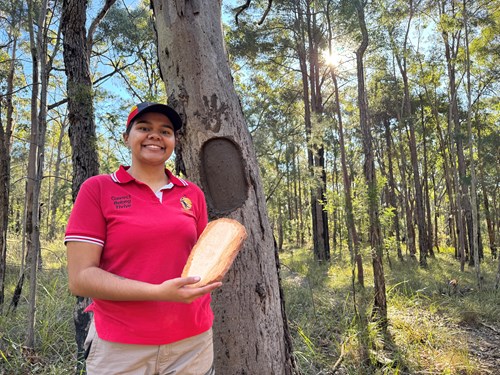
Following family footsteps: Trinity becomes Gandangara’s first Aboriginal Trainee ranger
Trinity’s visit to Uluru sparked a life-changing realisation that led her to become Gandangara Local Aboriginal Land Council’s first Aboriginal
Trainee ranger. Now she’s following in the footsteps of her great aunt, one of Australia’s first recorded Aboriginal rangers, while reconnecting with her culture and caring for Country.
Looking up at the towering red rock of Uluru, a sacred place for the Anangu people of Central Australia, Trinity made a life-changing decision: she would become an Aboriginal ranger, and develop her knowledge, understanding and connection to Country.
“Uluru is the most beautiful, most spiritual place I’ve ever been and I felt very connected. I realised at that moment that I wanted to be a park ranger — I just love walking and being out on Country,” Trinity says.
At the time, she was working as a receptionist at a resort near Uluru. When she returned home to Redfern in Sydney, she started looking for a ranger job. She became the Gandangara Local Aboriginal Land Council’s first Trainee ranger in October 2024.
Born in Dubbo, and spending some of her childhood in Taree, and then ever since in Redfern, “Since working at Gandangara I am connecting to Country and culture. There’s no need to be ashamed of what I do and who I am. It’s been a big change for me. It’s a big eye opener, and I’m very grateful for the opportunity that I’ve had.”
Weeks into the new role, Trinity faced a significant learning curve as she began a Certificate II in Conservation and Ecosystem Management. Most of her learning and practical work happens at Gandangara’s purpose-built Eco Depot at Heathcote Ridge in Sutherland Shire, on 1100 hectares owned by GLALC. Among other skills, Trinity learned how to identify native and non-native plants, spray weeds, track and identify animals, read maps and GPS.
“My brain is just loving the learning journey,” she says. “At school, although I loved science I got distracted easily, but during the traineeship it’s a lot easier because I am genuinely interested in the topics.”
Several people at GLALC have taken her on Country to reinforce her learning, including Uncle Darren Duncan, Gandangara LALC’s Senior Culture, Heritage and Land Management Officer. “Uncle Darren took us out for a walk and I saw an echidna up close, so close I could have patted him,” she says.
Since then, she’s seen Eastern Brown and Red Belly Black snakes, but wasn’t scared, just intrigued and is keen to do her snake handling course. “I have a really strong passion for looking after native animals, and I feel like if I do this course with snakes, that’s one step closer for me being able to handle more native animals,” she says.
‘Being a ranger to me is about being an advocate for the land, waterways, animals and sky, teaching people how to understand our connection to the land.’
Trinity also discovered that being a ranger is in her blood. Her great Aunty Elvina Oxley Paulson was one of Australia’s first recorded Aboriginal rangers. “I’m following my Auntie’s footsteps and I feel very proud of her legacy,” Trinity says. “She’s the knowledge holder in our family and she’s going to pass that knowledge to me. The more I learn about culture, the more I know I am an Aboriginal ranger. I am connected to culture and have an understanding of Country, and that’s important.”
Trinity says that when she takes visitors on a tour, she may show them a Melaleuca paperbark tree. Trinity shares the importance of trees and their significance in culture. Aboriginal people use the bark for wrapping food for cooking, as bedding, for shelters and, because the bark has antiseptic properties, for treating wounds.
Already, Trinity has had opportunities to host corporate groups on Country and speak to them about some of the wonders of the bush.
“I got so much good feedback,” she says. “The people said that I was funny, but the one thing that they liked best was my passion and how I spoke about our culture. That was nice, because I have learned most things just from watching and listening to others and Elders.”
Looking to the future, Trinity is excited that she’s found a career path that enables her to make a difference. “I would like to continue being an Aboriginal Ranger and bring both traditional knowledge and modern science to look after our beautiful country and also educate people on why this needs to be done.
“Being a ranger to me is about being an advocate for the land, waterways, animals and sky, teaching people how to understand our connection to the land and sharing our knowledge so they can feel connected too.”
